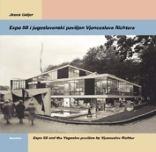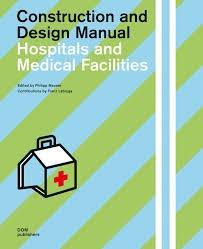EXPO 58 AND THE YUGOSLAV PAVILION BY VJENCESLAV RICHTER

Autor/es
- EAN: 9789537159085
- ISBN: 978-953-715-908-5
- Editorial: HORETZKY
- Año de la edición: 2009
- Encuadernación: Cartoné
- Páginas: 552
- Materias:
proyectos y edificios
pabellones de exposición
Sin stock. Envío en 30/90 días
pvp 50,00 €
Sin stock. Envío en 30/90 días
Reprint of the brochure which was the integral part of the first-prize winning competition project Diksi 2 in the 2nd round of the competition for the Yugoslav pavilion at Expo 58, by the authors Vjenceslav Richter and Emil Weber. This extremely richly illustrated book is structured in several thematic units. The first part consists of a historical overview of the world exhibitions and their cultural impact, primarily as a phenomenon of modern times. The entire history of the world exhibitions, from their beginnings to the World Exhibition in Brussels in 1958, is systematically and thoroughly presented in this section of the book. The second part presents the World Exhibition in Brussels in 1958 in the political context and from the economical, philosophical, artistic and architectural aspects which define this event as a symptom of that era. Almost all the exhibition units are exhaustively presented. The most important pavilions and appearances of certain countries are particularly addressed. The third part of the book begins with the history of Croatia's appearances at the world and big international exhibitions (within participation of different states whose part Croatia used to be). The emphasis is put on the most important and the most representative examples, such as Paris 1925 and 1937, Barcelona 1929, New York 1939. The publishing of this book aimed to point out that the Croatian modern architecture, therefore exhibition concept as a modern medium of mass communication shown through the example of this achievement, was entirely on the worldwide production quality level of its time. It is about one of the most significant achievements in the history of modern Croatian architecture, either in the context of contemporary world architecture, or taking into consideration the fact that the pavilion was bought out after the exhibition and moved to Wevelgem (some 80km from Brussels) where it is converted for the use of a private school, thus representing one of few Croatian architecture realisations abroad. The text is richly illustrated with photographs and archive materials illustrations (more than 700 illustrations - drawings, photographs, facsimiles from contemporary magazines), which document the text with detailed data about particular aspects of the appearance at the World Exhibition in Brussels in 1958, and about different sections of the display. This book is an accomplishment of a several years long scientific research dedicated to this subject; therefore, the majority of the materials have their first publishing in this book.





